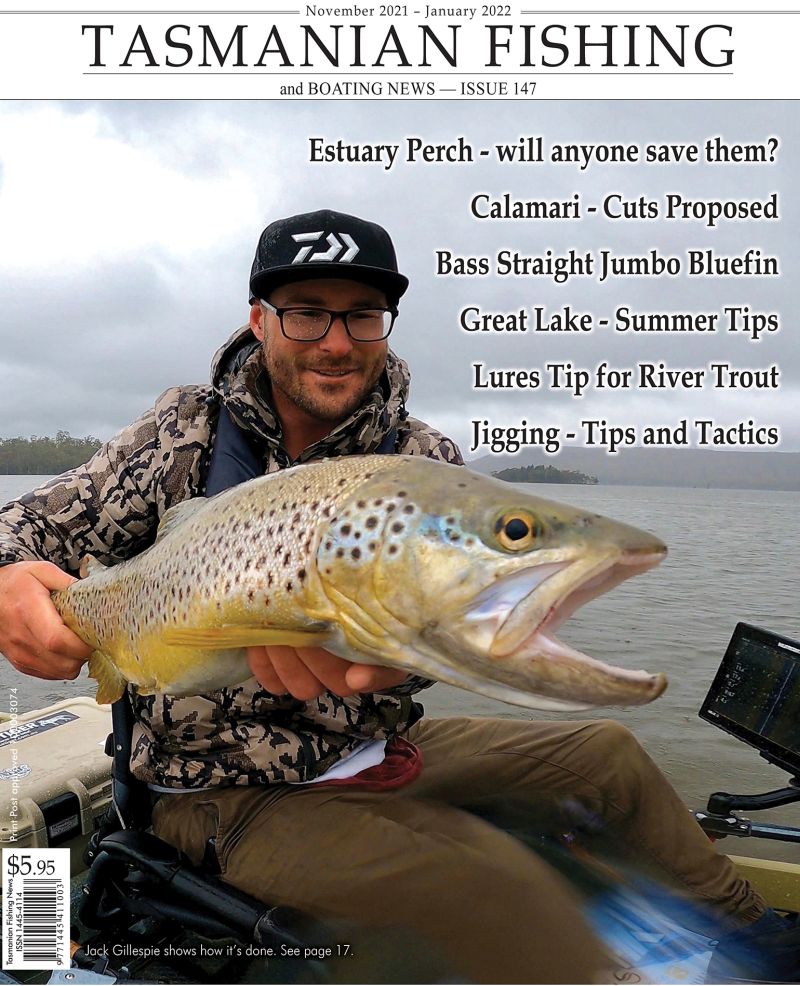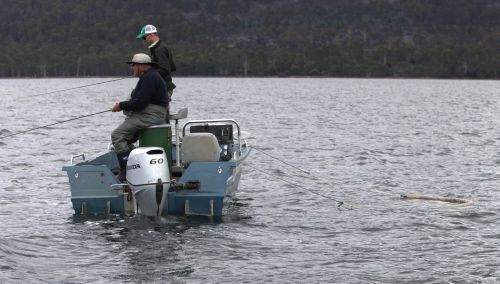Rock Lobster Plan - Some thoughts
The rock lobster fishery is in decline. The biomass has reduced and is still in decline. The total catch must be reduced to allow the biomass to rise.
There is real thought amongst recreational fishers that Government, and more particularly the fisheries department does no more than give recreational fishers lip service.
True there has been meetings statewide, and whilst all 230 commercial rock lobster fishers were notified with a letter regarding meetings, 21 400 recreational were only aware of these meetings if they happened to read the newspaper - and saw the Public Notice. This is not good enough.
Recreational marine fishers pay well over a million dollars in licence fees, and it would be wise to fully engage these people - not just take their money.
Recreational fishers take around 63% of the allocation to the recreational sector. That is 107t of 170t allocated. Rec potting is 83% of effort and 61% of catch. Diving is 15% of effort and 33% of catch. 60% of rec catch is for east/southeast region is less than 20 metres of water and this is said to be roughly equivalent to the commercial catch from this area as well. Current catch is about .75 lobsters per day for pots and 2.25 for divers. The average annual rec catch is 6-7 rock lobsters. Anecdotally some rec divers take a large number of rock lobster.
Commercial fishing catch is around 1500t, but a reduction has been agreed 09/10 of 3.5% and a further 10% 10/11. After that reductions are dependent on the annual monitoring. However uncaught commercial quota has been allowed to be carried over to the following year.
Commercial fishers are allowed to retain a small quantity of rock lobster for personal use. (1 rock lobster per day’s fishing up to a maximum of 5, if the trip is 5 days or longer). The personal possession rock lobster is recorded in a logbook and may not be sold. In 2007/8 the total number of lobsters retained under this provision was 4430 which equates to about 22 lobsters per vessel.
The Rock Lobster Management Plan Review Discussion Paper makes several proposals.
Most of the commercial proposals are rubbery, but this sector has the most to lose, and certainly has the most affect on biomass on the whole. Cuts, in some way, will be essential if the industry is to remain viable.
Some options we (Tasmanian Fishing and Boating News - www.tasfish.com) have discussed with interested parties include (in no particular order):
Reduce commercial catch (already flagged),
Remove carry over provisions in commercial catch (should be done immediately),
Reserve water less than 20 metres for recreational fishers - not practical. Water can be more than 20 metres deep only 5 metres from the shore in many areas,
Reduce bag/possession limits for all recs. (Unlikely to have any affect as current catch is .75 RL per day) Was reduced from 10 to 5 per day in 1998. It would be extremely unlikely for the bag/possession limit to ever go up in the rec sector when the fishery improves,
Reduce bag/possession limits for dive fishers. Remember divers are 15% of rec effort, but 33% of catch ( would have an immediate effect, but hard to police once divers are out of the water),
Disallow hookah (surface supplied air) diving for taking RL. Why? It does allow fishers to spend a long time underwater, allows large, breeding RL to be taken, give opportunity to target hard to reach RL, allows large numbers of RL to be taken. Would have immediate effect, and reasonably easy to police. See appendix 1 below.
Disallow hookah, but allow SCUBA. Somewhat limits access to small caves, and whilst hookah is unregulated in any way SCUBA has quite good controls and regulations.
Introduce maximum size limits for female RL (to allow breeding and predation on centropstephanus sea urchins) for recs, and/or commercial (has some merit, but sizes may vary in different areas),
Introduce recreational tags - A huge cost, a huge waste of tags would occur and would be almost impossible to manage. New tags would be required each year. Remember the average catch is 6-7 so how many tags would each fisher be allowed - 5, 10, 30 50 or more?
KEY MILESTONES - IN THE MANAGEMENT OF THE FISHERY
1885 First management restrictions (size limit, berried females and soft shell lobster)
1926 Attempt to introduce closed seasons including legislation of pots
1947 Introduction of closed seasons to limit the harvest of soft shell lobster
1950s Commercial licences were restricted to those dependent on the fishery / Pots allocated according to vessel
size with a maximum holding
1950 No potting areas including Derwent and D’Entrecasteaux Channel
1956 Recreational fishermen restricted to 1 pot
1960 Closed season for females from June to October (inclusive)
1962 Closure of September and October to fishing (exception King Island which had different male and female
seasons) / all recreational spearing of lobster banned
1963 Recreational ring limit increased from 1 ring to 4
1964 Recreational divers limited to 5 lobsters per day
1965 Vessels engaged in abalone fishing prohibited from carrying pots or rings
1966 Female size limit decreased to 4 inches, Male size limit decreased to 4 ¼ inches
1966 Restrictions on the number of commercial licences / all gear required to be identified
1971 All pots to be fitted with escape gaps
1970 Commercial fishers required to record fishing area (1° degree blocks)
1972 The number of commercial pots was fixed at 10,993
1979 All recreational fishers restricted to 5 lobsters per day
1980 Start of the season in NW Tasmania brought in line with the rest of Tasmania / Recreational catch increased
to 10 lobster per day
1984 Highest catch recorded of over 2,250 tonnes / Extension of NW coast and King Island closed season to
include October
1980s Concern over state of stocks as commercial catch rates started to drop
1989 Recreational bag limit reduced from 10 to 5 lobsters per day
1990 Start of pre-recruit monitoring (puerulus collectors)
1990’s Early 1990’s working group formed (government and fishers) to evaluate future management options
1992 Record of fishing area in ¼ degree blocks
1994 Lowest commercial catch levels since 1984 (catch was 1,440 tonnes and a peak of 344 vessels fishing )
1995 Recreational licences revised / First stock assessment of the fishery produced / Living Marine Resources Management Act 1995
1996 Industry poll indicated marginal preference for Individual transferable quota system (ITQ)
1997 Commercial fleet of 330 vessels
1998 March, ITQs introduced. Change to quota system from (output controls – although still with some input controls) / Increase maximum number of pots on a vessel from 40 to 50 / recreational rock lobster licence for rings introduced / 98-99 season, TACC set at 1,500 tonnes. Maximum of 10507 quota units and pots
2000-01 season TACC increased to 1,523 tonnes / Season length increased, September opened
2001 First 18 days of September opened / First studies into aquaculture with puerulus permits issued
2005 Statewide Legal size biomass is reaches a peak
2006 Resource sharing arrangement legislation implemented.
2008 TACC reduced by 3.5% for the 2009/10 quota year as response to declining stock indicators
FURTHER INFORMATION
1. Rock Lobster Fisheries Assessment Reports are available for free download at the TAFI
website
http://www.tafi.org.au/index.php/site/publications/category/rock_lobster/
2. Recreational Rock Lobster (and Abalone Fisheries) reports are available for free download at
the TAFI website;
http://www.tafi.org.au/index.php/site/publications/category/tafi_internal_reports/
3. A climate change report detailing predicted impacts on rock lobster stocks in Tasmania is
available for free download at the Australian Government, Department of Climate Change
website;
http://www.climatechange.gov.au/publications.aspx
4. The current rock lobster rules, the Fisheries (Rock Lobster) Rules 2006, and the Living Marine
Resources Management Act 1995, that the rules are made under, are available for free
download at the Tasmanian Government website;
http://www.thelaw.tas.gov.au/index.w3p
Appendix 1.
A quote from a website
"Hookah allows me to venture to remote locations and provisions me with air to enable diving for basically unlimited periods. I can travel to areas that most other amateur divers do not frequent and thereby discover fishing grounds that yield large numbers of big fish. These sorties offshore caused me to progress from flybridge style boats to a long-range trawler. xxxx provides a wonderful dive platform. Diving for crayfish usually requires squeezing into their caves. The smaller the diver, the more crayfish he can catch. When I commenced diving, I soon figured that taking a deep breath, removing my scuba tank, wriggling into a cave, catching a crayfish, then looking for my tank to allow me to resume breathing, was probably not going to result in a long and productive life.



